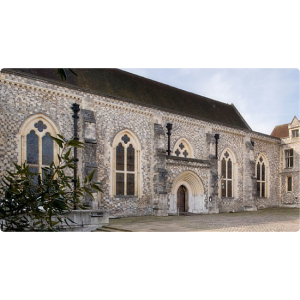-
Winchester
SO23 9DH
The Castle was originally constructed for William the Conqueror in 1067 to help secure his hold on the city after the Norman Conquest. It housed important aspects of government such as the Treasury and the Exchequer.
By the end of King John’s reign in 1216 the Castle and its royal palace needed extensive repair so between 1222 and 1235 the Castle’s hall was replaced by the building which you see today, at a cost of £500. In 1302, Edward I and his second wife narrowly escaped death when the royal apartments of the castle were destroyed by fire.
During the English Civil War the Castle was held by the Royalists until its capture by the Parliamentary Forces in 1646. Oliver Cromwell eventually ordered its demolition, but the Great Hall was kept as a venue for assemblies and the County Assizes.
Throughout its history the Great Hall has witnessed important events and been a legal and administrative centre. Sir Walter Raleigh stood trial here in 1603 and the notorious Judge Jeffreys condemned supporters of the Duke of Monmouth to death here as part of the Bloody Assizes in 1685.
Today it is in the care of Hampshire County Council and is usually open to the public, although it continues to be used for civic and other functions, as well as for concerts and exhibitions

